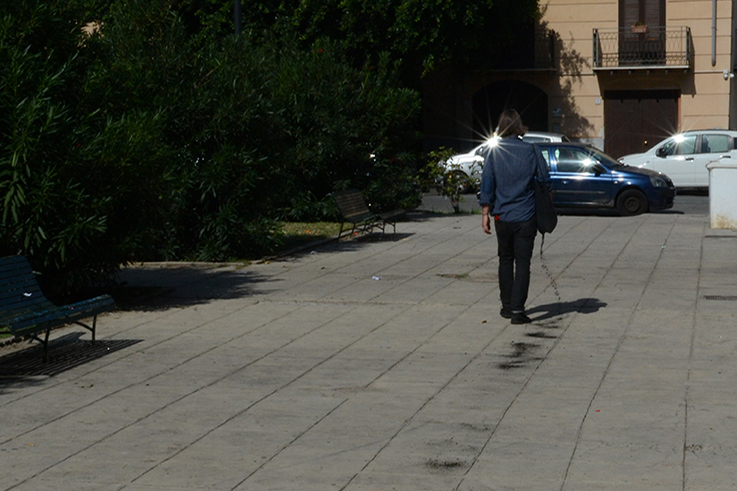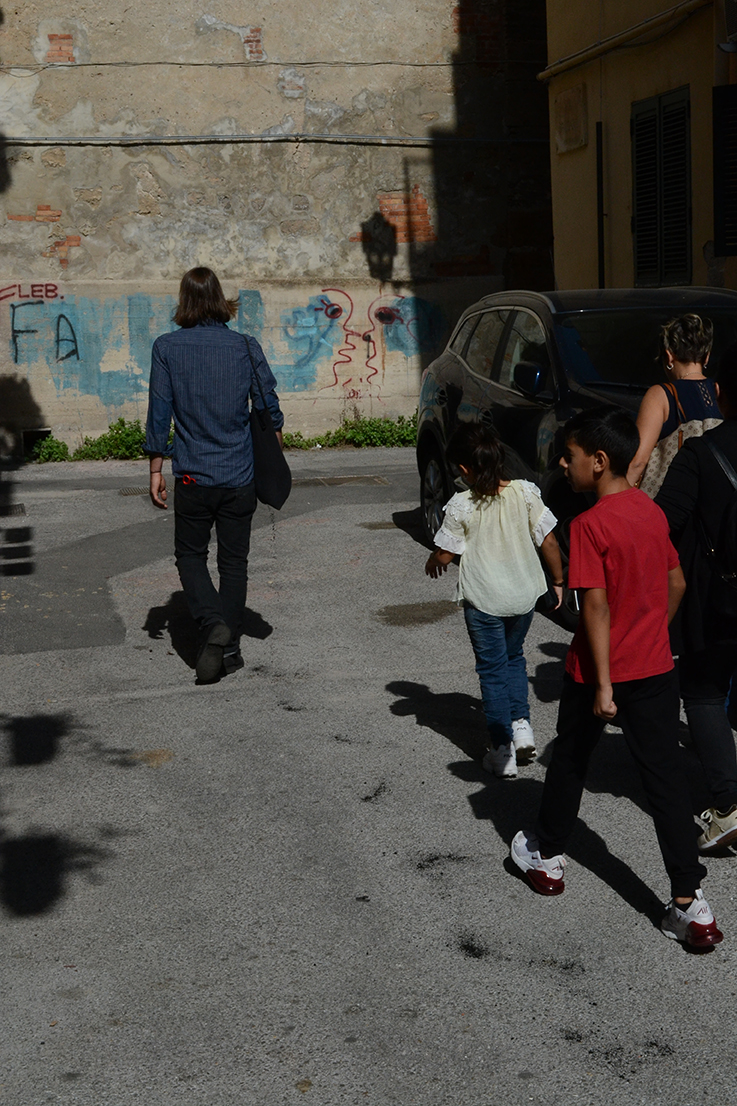


Traces of Stones
2019
Site Specific Performance
Palermo Sicily, IT
What can material remains tell about the past?
Inspiration for the performance is the unfinished construction of a church located in a traditional Greek neighborhood of the Palermo. In the 16th century the church was destroyed from the effects of an earthquake following an eruption of the volcano Etna and lay in ruins. In 1720, funds for a reconstruction were collected, however the initiative was later abandoned, presumably due to loss of the congregation.
Only a portion of the main façade was ever completed. The neighborhood has since changed and nearly all traces of its previous Greek inhabitants have vanished. The performance aims to call attention to the history of the neighborhood, the material remains one sees and the traces one makes.
The performance takes the form of a walk, beginning at Porta dei Greci, a port named after the harbor where greek sailors would arrive, and arriving at the unfinished reconstruction of S. Nicolò la Carrubba detta dei Greci.
Small black pebbles which were taken from the volcano Etna trickle out of the carried bag during the walk and leave traces of the path taken. Arriving at S. Nicolò la Carrubba detta dei Greci one is confronted with the unfinished church façade and the path one has taken from the harbor.
2019
Site Specific Performance
Palermo Sicily, IT
What can material remains tell about the past?
Inspiration for the performance is the unfinished construction of a church located in a traditional Greek neighborhood of the Palermo. In the 16th century the church was destroyed from the effects of an earthquake following an eruption of the volcano Etna and lay in ruins. In 1720, funds for a reconstruction were collected, however the initiative was later abandoned, presumably due to loss of the congregation.
Only a portion of the main façade was ever completed. The neighborhood has since changed and nearly all traces of its previous Greek inhabitants have vanished. The performance aims to call attention to the history of the neighborhood, the material remains one sees and the traces one makes.
The performance takes the form of a walk, beginning at Porta dei Greci, a port named after the harbor where greek sailors would arrive, and arriving at the unfinished reconstruction of S. Nicolò la Carrubba detta dei Greci.
Small black pebbles which were taken from the volcano Etna trickle out of the carried bag during the walk and leave traces of the path taken. Arriving at S. Nicolò la Carrubba detta dei Greci one is confronted with the unfinished church façade and the path one has taken from the harbor.


© Joshua Zielinski - 2025